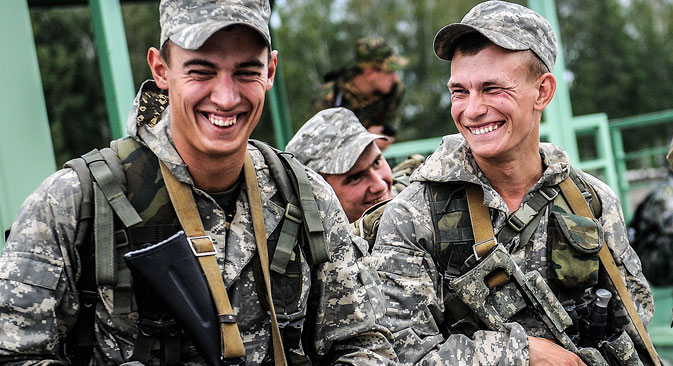
Servicemen participate in the Range Practice, a stage of the Masters of Reconnaissance competition, as part of the 2015 International Army Games.
Yevgeny Kurskov / TASS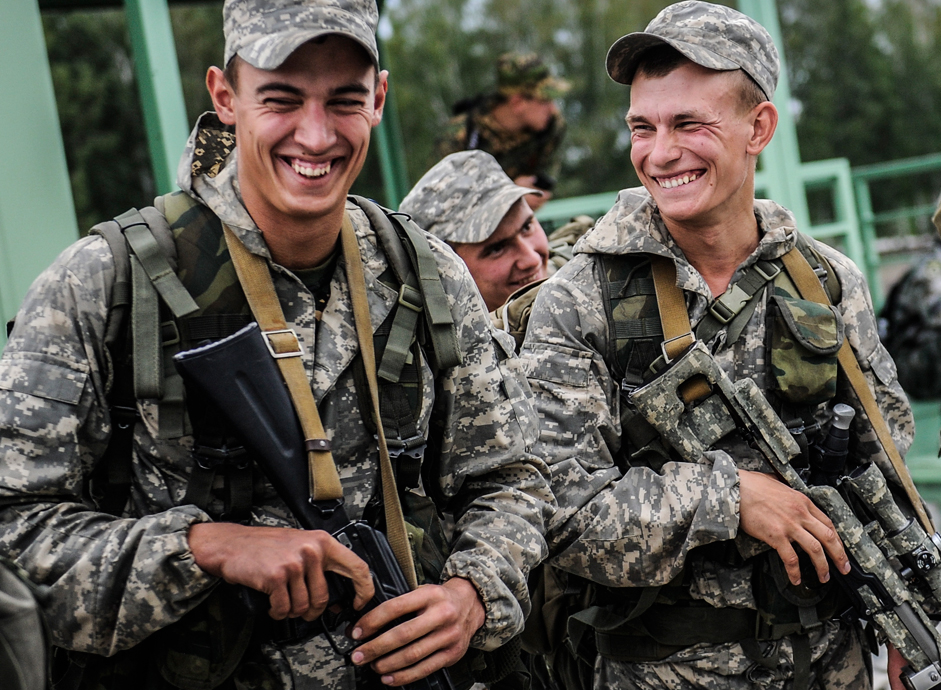 Servicemen participate in the Range Practice, a stage of the Masters of Reconnaissance competition, as part of the 2015 International Army Games. Source: Yevgeny Kurskov / TASS
Servicemen participate in the Range Practice, a stage of the Masters of Reconnaissance competition, as part of the 2015 International Army Games. Source: Yevgeny Kurskov / TASS
During the military campaign in Syria, the Russian armed forces has confirmed its standing as one of the best armies of the world, demonstrating a high level of technical potential and combat training. But as recently as 2008 before the conflict with Georgia began, no one was able to predict the readiness or effectiveness of the Russian Army.
The Russian Army was afflicted by a significant moral and material decline after the collapse of the Soviet Union. But over the last seven years, the Russian Army has been able to revive itself and become one of the most efficient armies in the world. Over the past year, Russia has played an active role in military operations and major training exercises, as well as continuing army reforms that began back in 2008.
Military service in Russia has historically acted as a career boost. In Soviet times, the army was known as the Workers’ and Peasants’ Army and it acquired a certain prestige; compulsory service lasted just 2-3 years and was regarded as an obligation for men. With its opportunities to learn a trade, military service gave many – particularly those from villages – a start in life.
Sergey Shoigu. Source: Ramil Sitdikov / RIA Novosti
During the upheavals in Russia in the 1990s, however, serving in the military lost its value as the armed forces received little funding, new equipment was not purchased, practically no military training took place and many career officers resigned in order to support their families.
“In the 1990s, I remember that every officer, including me, tried to wear a military uniform as little as possible – it was embarrassing. The military officers then were losers – people who could not get a good job stayed in the army. So people attended military service in their civilian clothes,” recalls Colonel Vladimir K.
This difficult period for the Russian Army lasted more than 10 years. Following Sergei Shoigu's appointment as Defense Minister, military pay increased significantly, with the monthly allowance being raised six-fold from RUB 12,000 or $170 to RUB 50,000 or $720 for a lieutenant. The housing issue has been addressed and most military members that had been waiting on a list for 20 years have been given housing.
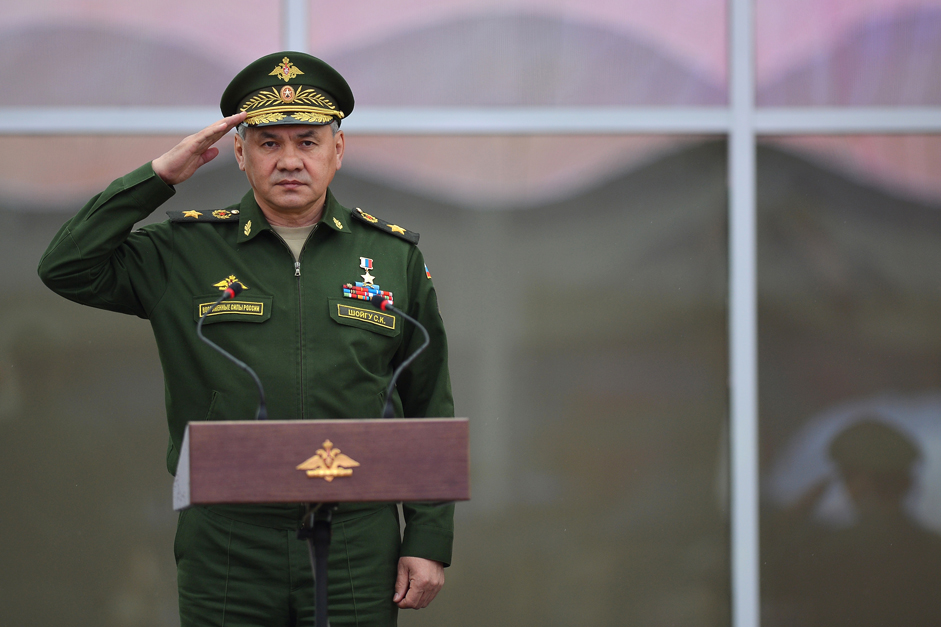
The staging of military exhibitions is now open to the public. The revival of DOSAAF (Volunteer Society for Cooperation with the Army, Aviation and Navy), which trains young people approaching the conscription age in military occupational specialties and also develops and popularizes military sports, including target shooting and battlefield orientation, have also borne fruit. As a result, public attitudes to army service and a career in the military have started to change. Wearing epaulettes have become prestigious once again and military service, whether conscription or professional, have made a comeback as a sign of masculinity.
In a recent survey by the Russian Public Opinion Research Center, 64 percent of respondents said that the army was the best place for a young man to get a good moral and physical education, almost twice as many as the 33 percent that said as much in a similar survey in 1990 on the Soviet Army.
Another positive factor is that living conditions are also perceived as having improved significantly: 60 percent described them as “good,” compared to just 18 percent in 1990.
Being employed by the military has become more prestigious in contemporary Russian society, although often it is used as a springboard for a career rather than a demonstration of an interest in military affairs.
“I don’t want to connect my fate with military service in the future,” says Vladimir P., a sergeant in the military commandant's office in Sevastopol. “I plan to start a career in government service or the FSB. They take people there that are just getting out of the army.”
More often than not, the motivation is material.
“Like a lot of people, I was tempted by the high pay compared to civilian workers,” says Anna Z., a lieutenant serving in a Moscow-based unit. “That was my main motive for joining the armed forces.”
Apart from this revival of its social role and an increased interest in the military as a profession by young people, the Russian army has changed in many other ways over the last three years.
Under the previous Minister of Defense, Anatoly Serdyukov, it was decided that all of Russia's military units had to be in a constant state of combat-readiness. Since then, the percentage of professional soldiers has increased every year and their number should reach 425,000 by 2017. Having so many professional members of the forces requires the constant improvement of their theoretical knowledge and the development of combat skills at military training facilities. The introduction of new military equipment that requires appropriate training further complicates matters.
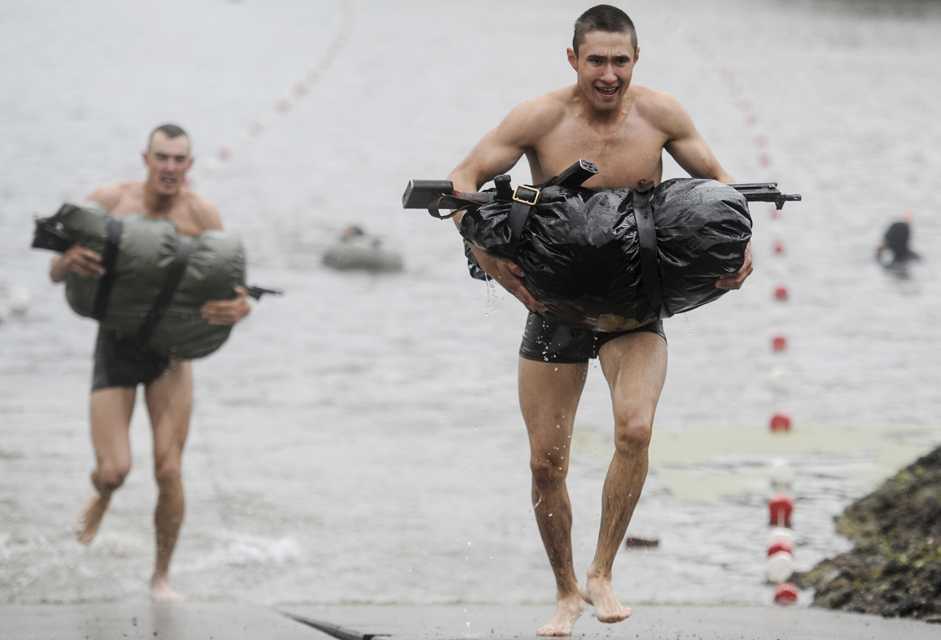 Members of the Novosibirsk Military Command Academy team crossing a water obstacle during the 2015 International Army Games. Source: Yevgeny Kurskov / TASS
Members of the Novosibirsk Military Command Academy team crossing a water obstacle during the 2015 International Army Games. Source: Yevgeny Kurskov / TASS
It is no surprise that large-scale training exercises and surprise inspections have become commonplace in the Russian military. According to experts, in his first year as Defense Minister in 2012 Shoigu intensified the training processes for military personnel. After seven different training exercises in 2010 to 2012, there were five surprise inspections of combat-readiness in 2013 alone for Russian army units in different regions of the country.
From 2013 to 2015, there were 20 surprise inspections and exercises involving foreign and Russian personnel. The quality of the skills learned can be seen in Russia's current anti-terrorist operations in Syria.
In general, the process of improving the combat readiness of Russia's forces covers several major factors: developing and improving individual abilities and the skills of personnel; improving the cohesion of the military authorities and their leadership methods; and organizing and supporting cooperation between the different types of armed forces.
In terms of scale, the most impressive stage of military training is the operational and strategic manoeuvres that involve 10,000s of personnel and 1000s of units of military equipment. They help Russia's military command to practice a modern form of personnel deployment for the future development of the army and navy.
Serdyukov had lobbied for the purchase of more foreign-made military goods, but Shoigu has reduced such purchases to a minimum since becoming Defense Minister. For instance an order for 1,775 Italian Iveco-LMV65 armored vehicles has been cancelled (although Russia still bought 358).
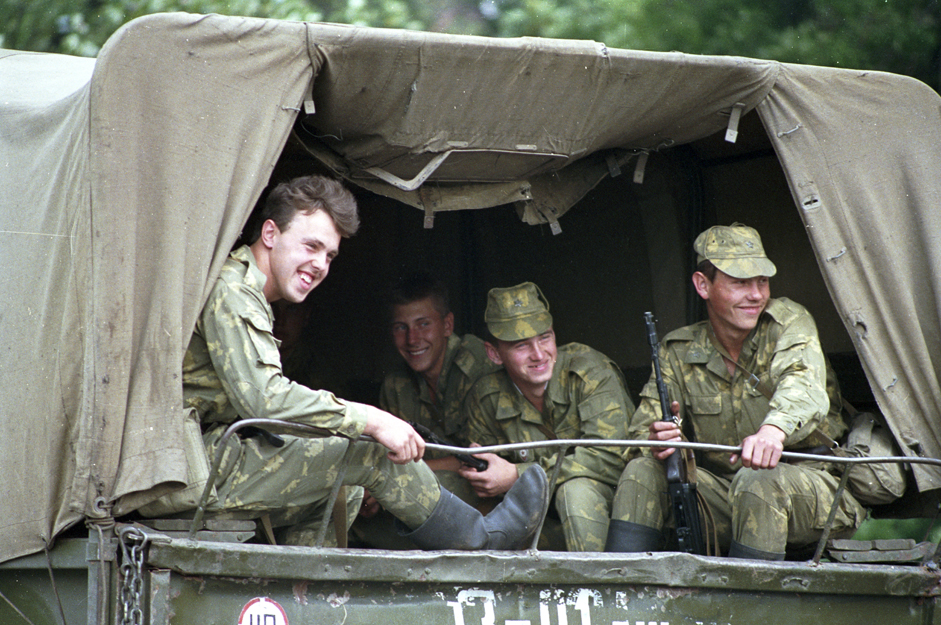 The state of emergency introduced in Russia. Military detachments in Moscow. Source: Alexander Polyakov / RIA Novosti
The state of emergency introduced in Russia. Military detachments in Moscow. Source: Alexander Polyakov / RIA Novosti
Additionally, steps have been taken to substitute imported components with Russian-made equivalents. The conflict with Ukraine has dealt a significant blow to Russia's defense industry, forcing the country to produce helicopter and ship engines domestically. Russia had been buying a considerable range of military products from its neighbor and the need to find alternatives naturally delayed the introduction of new equipment.
Even so, Russia intends to modernize 70 percent of its weaponry by 2020.
“Indeed, at a certain time we increased defense spending,” said Prime Minister Dmitry Medvedev in an interview on December 9, 2015. “By that point the status of our military hardware was below par. Now we've brought this spending up to international levels.”
As it stands, in 2015 half of the Russian army's military equipment is already new, so the target does not seem unreasonable.
For instance, Russia's army is already being equipped with the Ratnik infantry combat system, which includes the new AK-12 rifle. It now has more state-of-the-art Tornado-G multiple launch rocket systems, 120-mm Khosta self-propelled guns and Khrizantema-S self-propelled anti-tank missile systems. It is also getting the latest Iskander-M tactical ballistic missile systems.
As well as an increase in the number of armored trucks and cars of various classes and functions, the army is getting modified BTR-82 and BTR-82A armored personnel carriers. A decision has also been made to go back to purchasing BMD-4m infantry fighting vehicles. The armored forces have been given tanks such as the T-72BA, T-80BA, T-80UA, T-80U-E1 and T-90A. In the near future, the forces should get the latest models based on the Armata heavy tank platform.
The country's air defense forces have been given the latest Triumph S-300V4 and S-400 surface-to-air missile systems.
The aerospace forces have the latest Sukhoi Su-34, Su-30 and Su-35 fighter aircraft and the Mil Mi-28N and Kamov Ka-52 helicopters. Some of them have shown their capabilities in military operations against ISIS in Syria. Air-to-surface missiles such as the Kh-29L and the Kh-101 have also proved their worth.
The navy is being provided with new types of vessels and submarines equipped with effective weapons systems, such as the well-known Kalibr cruise missiles used by Russia against ISIS. It also now has cutting-edge submarines equipped with Bulava ballistic missiles.
The scheduled replacement of ground-launched ballistic missiles is also under way. Russia's Strategic Missile Troops are being equipped with new Topol-M and Yars intercontinental ballistic missiles.
The Russian government allocates significant resources not only to providing the army with modern equipment and weaponry, but also to research and development.
At the end of 2013, a new federal law was passed establishing control mechanisms for the defense industry. Now, several agencies will simultaneously monitor how public funds allocated to new weaponry for the army are spent.
One of Shoigu's first steps as defense minister was to increase the number of employees working in equipment acceptance inspection to 25,000 in order to make cooperation between the military and the defense industry more effective. Representatives of the military at defense industry companies monitor product quality, which significantly reduces the number of complaints before the products are brought into service.
In early 2015, by presidential decree, chief designers were put in charge of work on creating strategically important systems. There will be no more than 20 such designers, but their status and responsibilities will increase. As such, Russia's defense industry has returned to something resembling a Soviet-era system of command: at the time chief designers heading the design offices made decisions concerning the direction of R&D in creating advanced technology.
The Soviet structure of the armed forces was completely dismantled as a result of the military reforms of 2008 under Serdyukov. The large divisions, which complicated the command structure, were replaced by mobile brigades that meet the requirements of modern warfare.
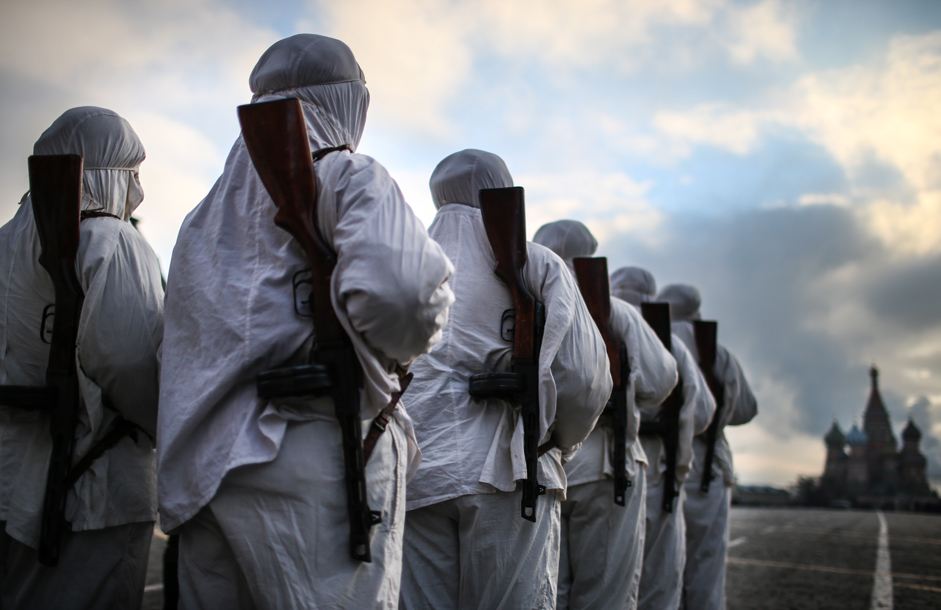 Participants dressed as Red Army soldiers seen in Moscow's Red Square ahead of a military parade, November 7, 2015. Source: Stanislav Krasilnikov / TASS
Participants dressed as Red Army soldiers seen in Moscow's Red Square ahead of a military parade, November 7, 2015. Source: Stanislav Krasilnikov / TASS
The army itself is becoming more professional and gradually moving away from universal conscription. There are already more professional members of the forces than conscripts.
However, Russia is not in a position to abolish conscription altogether. Its economy today cannot support a fully professional army and in any case the number of professional members of the forces is 400,000 less than the million proposed by the country's military leaders. Apart from the U.S., no country in the world today has the capacity to maintain a professional army of one million soldiers.
Unconventional methods are being used to increase numbers. For instance, following an idea from Shoigu, so-called “research squadrons” have been set up in the army. These are units where conscripts can engage in defense research while completing their military service. The Ministry of Defense expects that soldiers from these research squadrons will be more willing to sign professional contracts after completing their compulsory military service.
Military education is one of the best and most prestigious forms of education in Russia. This goes for both secondary military education (such as the cadet corps and the Suvorov and Nakhimov schools) and higher military education (including academies, military universities and advanced military institutes).
All of these academic institutions have their own specialization – air, sea, engineering or command. The military higher education institutions have one huge advantage over their civilian counterparts: graduates from a military higher education institution have two areas of expertise (military and civilian), making it easier for them to find work.
Young women can also enter military schools. For example, at the level of cadet education in Russia there is an elite boarding school for female Ministry of Defense pupils and some military higher education institutions allow women to study certain specialist military fields including communications, military medicine and certain command positions.
From 2010 to 2012 some military institutions temporarily ceased taking in new students because of the reduction in the number of officers in the armed forces, but they are now accepting them again.
All rights reserved by Rossiyskaya Gazeta.
Subscribe
to our newsletter!
Get the week's best stories straight to your inbox